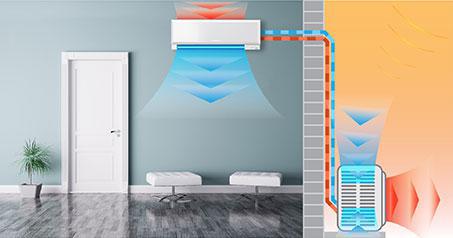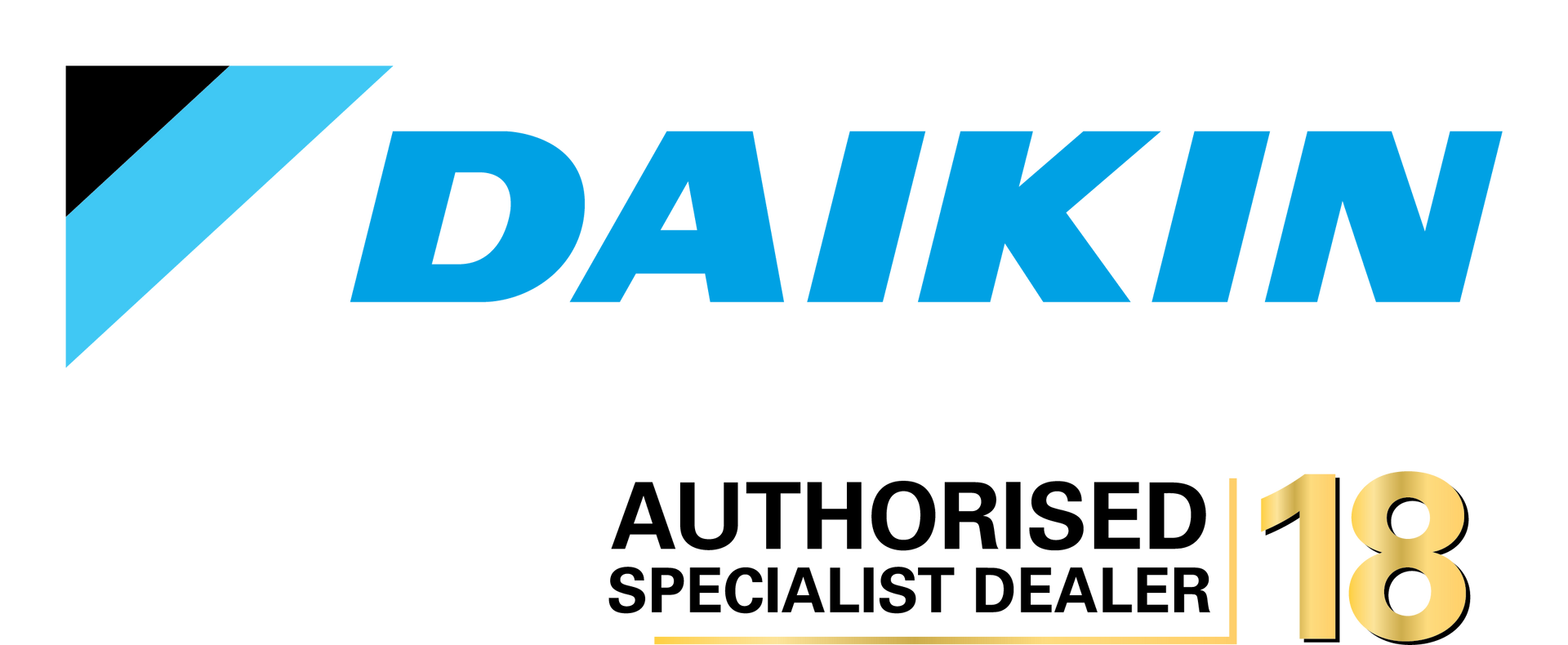Frequently Asked Heat Pump Questions
We Will Guide You Through The Process
The Heat Pump People will be your guide through all aspects of choosing your heating or HVAC solutions. We are a trusted name throughout Christchurch and Canterbury, and look forward to working with you.
Before getting started you can feel free to peruse our FAQs below.
Equipment Selection & Installation
How do I choose the right heating or cooling solution?
Key considerations include the size of the area you wish to heat or cool, the local climate, the number of windows in the area, insulation in the walls and possible location options.
Correctly determining the size of equipment for your space is critical and directly relates to how much energy or heat the unit can produce.
An undersized unit will be ineffective in bringing a room to the desired temperature, while an oversized unit will turn off and on frequently, causing wear and tear.
To help, we can tailor make a system suited to your needs and provide an obligation-free quote*.
How long will my installation take?
A typical back to back installation of a single split system, without any complications, takes approximately four hours. Meanwhile, installation on an internal wall can take up to one day.
Times can vary from project to project, depending on the complexities of the building, pipe runs or electrical requirements.
Can heat pumps be recessed into the wall?
Modern heat pumps are generally unobtrusive in style and size. Hi-walls are mounted close to the ceiling and some floor consoles can be recessed into walls. Cassettes and ducted split systems can be hidden in the ceiling.
How long will my heat pump last?
Good quality equipment, installed by qualified contractors, can have a life span of 10 to 15 years. Poor maintenance and environmental factors can cause premature failure. Regular inspection and maintenance will allow your system to operate normally for as long as possible.
How long is the warranty period on a heat pump?
The average warranty period for a new heat pump in New Zealand is five years.
Are heat pumps noisy?
No. The leading brands on the market have very reasonable noise levels. You will find most of the noise you are hearing inside your house is the sound of the air being forced out of the internal grills, similar to a circulation fan. You can control how fast the internal fan runs and thus its’ noise levels, by using the remote control.
Service & Preventative Maintenance
How frequently should I service my heat pump?
As a guideline, it is recommended that commercial systems have a thorough annual preventative maintenance check, coupled with three quarterly filter checks.
Residential units require a comprehensive service every two years as a minimum (when filters are being cleaned regularly). However you may wish to do this annually before each winter to ensure your unit is working optimally.
It is important to keep vegetation clear of the outdoor unit so that airflow is not impeded and to check the unit is clear of leaves monthly.
How often do filters need to be cleaned?
A commercial unit requires a quarterly check, as part of an annual preventative maintenance plan. For residential units we recommend you review your filters and clean them monthly, as they become dirty quickly.
Do filters need to be replaced?
If damaged, yes. If not damaged they do not need to be replaced, but they do need to be cleaned regularly.
Running Costs & Energy Efficiency
How much does a heat pump cost to run?
This calculation considers the energy efficiency of your particular unit, whether it is sized correctly for the area, your individual energy company rates and how effectively you use the unit.
The EECA (Energy Efficiency Conservation Authority) has identified heat pumps as one of the most energy efficient forms of heating around.
Heat pumps do not create heat, they simply move available heat from one place to another. The little energy that is needed is predominantly used to run the compressor. A heat pump typically uses 1kW to create 4kW of heat.
 |
 |
Operation
What setting should I leave my unit on?
Aim for a minimum of 18ºC while you are using the space (consider increasing this slightly if you have children, unwell people or elderly). Reduce to around 16ºC for bedrooms overnight.
What is the difference between a fixed and inverter system?
Fixed Speed System
Fixed speed systems get to temperature slowly as the output rating is fixed, they then turn on and off to maintain the room temperature.
As the fixed speed system has only one speed that it can run at, it takes longer to get to the required temperature which tends to use more power than an inverter driven system.
Inverter Systems
Inverter systems work differently by initially increasing output to achieve the desired set temperature faster and then continually adjusting their cooling and heating output to maintain a constant room temperature. The use of inverter technology removes power fluctuations and wastage experienced in fixed systems creating energy savings and consistently comfortable, quite environments.
How a heat pump works
Heating
Heating
In heating mode the heat pump moves available heat from one place to another (a much more energy efficient heating technique than traditional heaters which have to generate heat energy). The heat exchanger in the outdoor unit obtains warmth from the air and transfers it inside the building. The cooler room air warms as the outdoor heat energy is transferred via refrigerant travelling through copper pipework, over the heat exchanger, into the indoor unit and out into the room.

Cooling
In cooling mode the heat exchanger in the indoor unit is used to absorb the room’s heat energy using refrigerant. The heat energy is then transferred to the outdoor unit where that heat exchanger expels it into the outside air.

Defrosting
When the temperature drops, heat pumps perform a defrost cycle to remove ice build-up on the outdoor heat exchanger. Ice build-up occurs during the heat process as the outdoor unit takes the moisture and heat from the air. The defrost cycle is a necessary part of the heat pump’s operation, as the airflow can be restricted if the heat exchanger is covered in ice, which will subsequently effect its efficiency. Ice also acts as a thermal insulation barrier on the heat exchanger preventing heat absorption. By defrosting the heat exchanger the unit’s efficiency increases.
Breakdown
Why does my outdoor unit drip water?
It is quite common for water to drip from the outdoor unit in the winter and from the indoor unit drain to the outside in the summer. The amount of water produced is similar to a dehumidifier.
I’ve changed my remote batteries but the unit still isn’t responding correctly?
Try changing the batteries in the remote again, as even in a new pack there may be faulty batteries.
Your remote control will need the batteries changed periodically, when the screen becomes faint or when it becomes less responsive.
When you do this, the heat pump will revert to its factory settings and will need to be readjusted. You can avoid this by changing one battery at a time.
Why does my heat pump make noises?
A heat pump can make a sound like air being exhaled or gurgling when defrosting. When the temperature drops, heat pumps need to perform a ‘defrost cycle’ to remove ice build-up on the outdoor coils and maintain efficiency.
This can mean your heat pump will temporarily stop operating or will blow out cooler air. It is important not to turn your unit off whilst the defrost cycle is running.
My unit will not work or is making loud noises – what should I do?
If your unit continues to make noises or is not operating it may need further investigation from a trained technician.
We have a number of technicians able to diagnose and repair faults, including parts replacement in a wide range of equipment. Please contact for an appointment.
Selecting a Heat Pump
What are the different types of heat pumps and air conditioners?
For heating and cooling one area of your home or small commercial space, single split heat pumps provide heating and cooling to individual rooms or a specific area such as a lounge or the main living area of an open-plan home. They can also be used in combination to serve larger spaces and multiple rooms. Split systems have one external outdoor unit (containing a compressor) and an internal unit mounted high on the wall or on the floor. The internal unit is made up of electronic controls and a fan which circulates air for cooling or heating, depending on the setting of the unit. A single split system can be either a floor console, a high wall or an ceiling cassette.
Read more about Single Room split systems such as wall mounted heat pumps and floor console heat pumps here - https://www.theheatpumppeople.co.nz/split-systems
For multi-room systems, one option is a multi-split system. Ideal for buildings with limited ducting or outdoor space as well as heating and cooling multiple rooms with individual temperature control.
Multi-split systems work in the same way as single split systems with the benefit of being able to connect multiple indoor units to one outdoor unit and are used in both commercial and residential environments.
Where there is a lack of space or need to reduce the number of outdoor units, multi-split systems hold a distinctive advantage over several single split units and can be operated individually to maintain individual temperature control in each area.
These systems are not limited to just one type of indoor unit, they can combine wall, floor, ceiling mounted air conditioning units and even air curtains for commercial applications.
Latest Blogs
Read our latest Blog
for tips on maintenance, servicing, cleaning and selecting an HVAC (Heating, Ventilation & Air Conditioning) Solution for your home or office.
*Free quote is for a consultation with our estimator to discuss heat pump options (charges will apply for a technician to diagnose a fault on an existing system).







